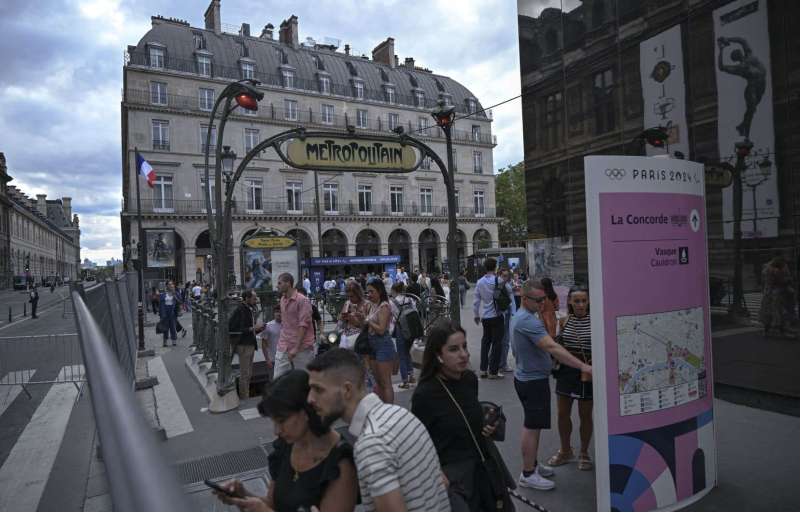
Photo: Mauro Pimentel Agence France-Presse To get around Paris, you can use the signage that has been deployed inside the Olympic perimeter, as well as in the surrounding streets and public transport, in a soothing and reassuring pink color.
Éric Desrosiers in Paris
Published at 8:46 a.m.
- Europe
Through observations, winks and anecdotes, the Carnets de Paris take you to the heart of the Olympic Games.
A classic challenge of the Olympic Games is transportation issues. Each time, it involves athletes stuck in traffic on the way to the stadium and the road headaches inflicted on motorists by hosting an event of such extraordinary scale and security challenges. The generally favoured formula is based on shuttle systems reserved for athletes, staff and media representatives who benefit from priority lanes in the city.
The Beijing Winter Olympics saw an extreme version of this model, with the COVID pandemic forcing (or giving organizers the excuse) to require everyone in the Olympic bubble to systematically use shuttles, even to get from one stadium to another that were only a block apart.
200% Deposit Bonus up to €3,000 180% First Deposit Bonus up to $20,000In Paris, because they wanted to reduce their carbon footprint and had one of the largest and most developed public transportation networks in the world, organizers instead chose to give a pass to everyone who didn’t absolutely need shuttles, including members of the press. To avoid losing too many people along the way, the pass comes with a mobile app that shows the most efficient way to get from one point to the other by public transit, bike, taxi, or foot.
To help you find your way, you can also use the signage that has been deployed by the organizers inside the Olympic perimeter, as well as in the surrounding streets and public transportation, in a soothing and reassuring pink color.
In the metro, this pink is found everywhere, including on the network maps where each station leading to a competition site is surrounded by the color. At the most important stops, messages are broadcast in several languages, but not always the same ones. In addition to French and English, Spanish is usually added, but sometimes German or Japanese.
Additional staff wearing a purple jacket has been provided in the stations to help lost travelers. They are also found on the busiest platforms, in front of each carriage door, to prevent one from getting stuck there.
All this generally works well despite the stations which occasionally have to be closed due to the Games and times of high traffic, at the start or end of a competition.
We realized this on Friday when journalists were exceptionally invited to take shuttles to go to the opening ceremony of the Games, Place du Trocadéro, and back. On the way back, it took us 45 minutes to cover 4 kilometers through a traffic jam of police vehicles.
All we wanted was that we lets us get out of the bus to find the nearest pink line station.
This report was financed thanks to the support of Transat-Le Devoir International Journalism Fund.

